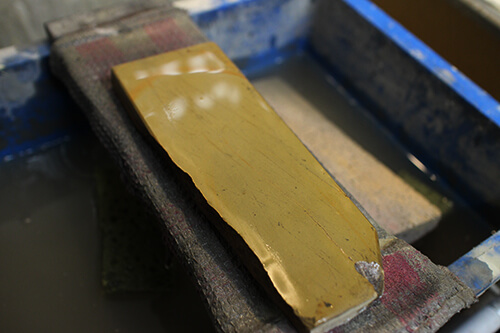Natural whetstone

Once upon a time, I was gifted a bag of assorted natural whetstones from a sushi chef who said, ‘I don’t use these anymore, so you can have them!’
Today, I finally opened that bag. Every stone inside was well-used and worn thin, but they all had this charming, almost seductive quality to them.
The Ao-to stones, for example, were easy to identify by their origin mountain, but the Awaseto stones? I have no idea where they came from! I can make an educated guess—’This feels like it might be from XX Mountain,’—but there’s always something a bit off that makes me second-guess myself.
Out of curiosity, I decided to give one of these stones a test run.

The whetstone had grooves all over the surface and looked like it could crack at any moment… But despite its worn appearance, the texture was smooth, and it felt like a finely grained Awaseto stone.
The knife I worked on today was a Togashi-made Kamausuba, made with White No. 2 steel. I lightly applied some Itohiki, and the steel really gripped it—amazing! Even though this wasn’t a coarse stone, it did an excellent job of grinding the steel down. Just like I expected, it brought out that sharp, dignified edge typical of White No. 2 steel.
This type of edge is perfect for chefs who prefer a sharp, precise blade. I’m thinking of reinforcing the stone to avoid it cracking, and using it for Honbaduke. I’m starting to think that stones like this could be what we mean by a truly great find!
This kind of natural whetstone would definitely be a gem for busy chefs who need a sharp edge in no time!
- 2015-01-20





